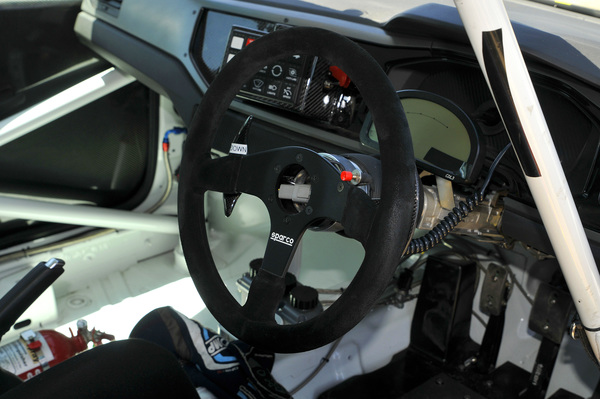Our long term Polo GTI meets its SupaPolo sibling in one last roadtrip.

Our departing long-term Volkswagen Polo GTI meets Volkswagen Motorsport’s GTC SupaPolo.
Regular readers of these hallowed pages will be aware that The Citizen Motoring‘s scribes have, over the last few months, enjoyed the favours of a Volkswagen Polo GTI long-term test car.
We have stretched its legs at the Gerotek testing facility, taken it camping to judge its luggage carrying capabilities, driven it around Johannesburg to find out how it does as a daily commuter and tested its fuel consumption abilities under all these circumstances, albeit the time during hard lockdown robbed us of some precious time in the hot hatch.
Then, just before we returned the vehicle to Volkswagen, this writer drove it to the Free State Phakisa Raceway. We wanted to photograph it next to a Polo that is busy taking South African circuit racing by storm. Volkswagen Motorsport’s Supa Polo made its debut at last year’s Global Touring Car championship final, with Michael Stephen pedalling the prototype around the Red Star Raceway near Delmas.
Volkswagen sold the vehicles to privateers and by the time the 2020 racing season started, there were 10 Supa Polos in privateer hands, bringing much needed substance to a perilously thin GTC grid. All of which was put on hold during the Covid-19 lockdown.
Motorsport resumed at the Zwartkops Raceway on July 25, and some of the Supa Polos were entered for a round of this year’s Endurance racing series. The idea was just to test them, and retire when they started to display niggles. But, they showed no niggles and, after four hours, one of them held fourth place overall.
RELATED: Long-term: Our Volkswagen Polo GTI impresses against the clock
On September 5, another Supa Polo finished second overall in a four-hour Endurance race at the East London circuit. At Phakisa, the Car Care Clinic Supa Polo of Wouter Roos and Graeme Nathan continued the trend by winning the annual Phakisa 200 endurance race against 41 other cars.
Earlier in the day, Roos had also taken the car to victory in the sprint race for 111 Saloon and Sports Cars. Very much the vehicle of the day then, and we were honoured to photograph the racer next to our GTI road car. Strangely enough, their profiles do not look all that different. Sure, the race car is lower, wider, much more colourful and boasts a large rear wing, but it is undoubtedly a Polo at first glance.
The road car sits on 18-inch spoked alloy wheels in 215/40 R18 tyres, while the racer boasts 18-inch spoked items in 240/65 R18 semi-slick Dunlop rubber.
Inside, the road car will seat five adults on comfortable leather upholstery, while boasting climate control, huge sound and every electronic gizmo that will click, bang, display or communicate Donald Trump’s current Covid status. The leather-rimmed steering wheel features the traditional red stitching that has become an iconic GTI trademark over the years.
The race car is designed for single occupation only, with the driver residing in a Recaro bucket seat, facing a large electronic rev counter. The interior is dominated by a sturdy full roll cage and five-point safety harnass, with stuff like a fire extinguisher, brake fluid containers and the fuel tank mounted on the floor. Its steering wheel is a Sparco item with no embelishments at all.
Both vehicles are powered by Volkswagen’s 1 984cc, turbocharged four-cylinder engine, but there are differences. The road car produces 147 kW of power and 320 Nm of torque. The race car comes with 230 kW and 420 Nm, plus a Push to Pass button that will gift the vehicle 20kW of extra power for short intervals.
Long-term: Outrunning Covid-19, GTI-style
The GTI sends the grunt and twist to the front wheels via a six-speed automatic DSG as opposed to the racer’s M-Trac six-speed sequential unit with a Motec paddle shift system. The road car’s unladen mass is 1 355 kg, versus the race car’s 1 200 kg.
The Polo GTI will accelerate from standstill to 100 km/h in 6.63 sec as proven by Road Test Editor, and has a top speed of 237 km/h. The race car’s acceleration figures are not known – the Car Care Clinic team has simply never bothered to check, since they are only interested in lap times. Surprisingly, the racing Polo’s top speed is just 230km/h. This is due to its current gearing, designed to get it from racetrack corner to racetrack corner as quickly as possible.
As with most race cars, the emphasis is on being Quick, rather than just Fast. The standard GTI’s fuel consumption, when tested by us, was 6.4L/100 km, with its 40-litre tank giving a range of 678 km. The race team knows their car’s fuel consumption, because they need to plan pit stop intervals during long distance events. Their Supa Polo has a 65-litre tank, with a range of around 150km at race pace. That works out to about 44L/100 km – not a great selling point, but going really quick has never been cheap.
Which brings us to the purchase prices – the Polo GTI costs R437 300, while Volkswagen Motorsport will build you a brand new Supa Polo for R700 000. Our time with the Car care Clinic team ended on a discordant note. We offered them our road car to drive, and they were not interested. Then we asked if we could drive the race car, and they were REALLY not interested. Ah well, you cannot win them all.
For more news your way, download The Citizen’s app for iOS and Android.
Download our app








